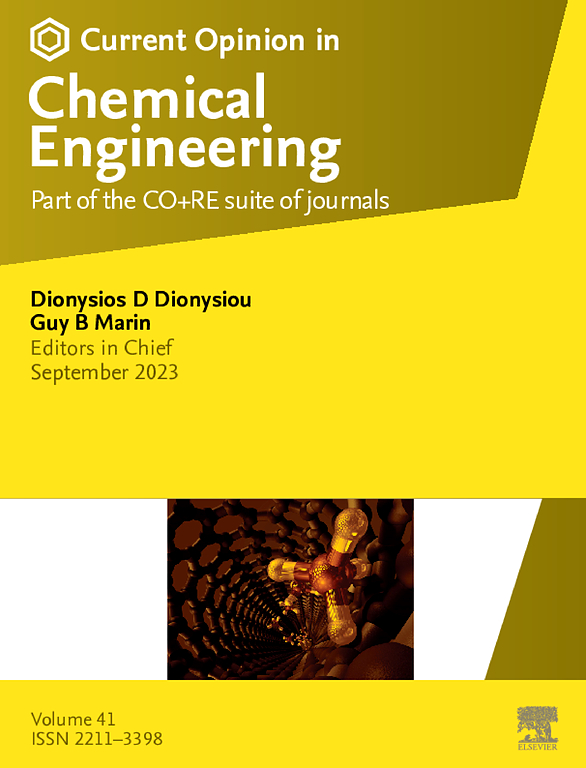Recent developments of high-gravity (reactive) distillation in rotating packed beds
IF 6.8
2区 工程技术
Q1 BIOTECHNOLOGY & APPLIED MICROBIOLOGY
引用次数: 0
Abstract
Gravitation dictates the allowable flow phases and the achievable mass transfer rates in classic distillation columns, which are tall for that exact reason. High-gravity (HiGee) devices use a high centrifugal field to increase the interfacial area through high-speed rotating packing, resulting in a large enhancement of gas–liquid mass transfer and thus smaller equipment volumes. HiGee is an effective process intensification approach to enhance both reaction and separation efficiency. Combining reaction and distillation in a HiGee equipment (R-HiGee) is a topic that attracts significant attention. This paper summarises recent developments in HiGee (reactive) distillation technologies, including process synthesis and design, modelling and analysis of rotating packed bed systems, and equipment design. It also highlights future directions for developments in order to facilitate the systematic evaluation and application of high-gravity (reactive) distillation technologies.
旋转填料床中高重力(反应)精馏的最新进展
重力决定了经典精馏塔的允许流动相和可实现的传质率,正是由于这个原因,这些传质率很高。高重力(HiGee)装置利用高离心力,通过高速旋转填料来增加界面面积,从而大大增强气液传质,从而减小设备体积。HiGee是一种有效的过程强化方法,可同时提高反应和分离效率。将反应和精馏结合在一个高热设备(R-HiGee)中是一个备受关注的课题。本文综述了反应精馏技术的最新进展,包括工艺合成和设计、旋转填料床系统的建模和分析以及设备设计。并指出了未来的发展方向,以促进高重力(反应)蒸馏技术的系统评价和应用。
本文章由计算机程序翻译,如有差异,请以英文原文为准。
求助全文
约1分钟内获得全文
求助全文
来源期刊

Current Opinion in Chemical Engineering
BIOTECHNOLOGY & APPLIED MICROBIOLOGYENGINE-ENGINEERING, CHEMICAL
CiteScore
12.80
自引率
3.00%
发文量
114
期刊介绍:
Current Opinion in Chemical Engineering is devoted to bringing forth short and focused review articles written by experts on current advances in different areas of chemical engineering. Only invited review articles will be published.
The goals of each review article in Current Opinion in Chemical Engineering are:
1. To acquaint the reader/researcher with the most important recent papers in the given topic.
2. To provide the reader with the views/opinions of the expert in each topic.
The reviews are short (about 2500 words or 5-10 printed pages with figures) and serve as an invaluable source of information for researchers, teachers, professionals and students. The reviews also aim to stimulate exchange of ideas among experts.
Themed sections:
Each review will focus on particular aspects of one of the following themed sections of chemical engineering:
1. Nanotechnology
2. Energy and environmental engineering
3. Biotechnology and bioprocess engineering
4. Biological engineering (covering tissue engineering, regenerative medicine, drug delivery)
5. Separation engineering (covering membrane technologies, adsorbents, desalination, distillation etc.)
6. Materials engineering (covering biomaterials, inorganic especially ceramic materials, nanostructured materials).
7. Process systems engineering
8. Reaction engineering and catalysis.
 求助内容:
求助内容: 应助结果提醒方式:
应助结果提醒方式:


